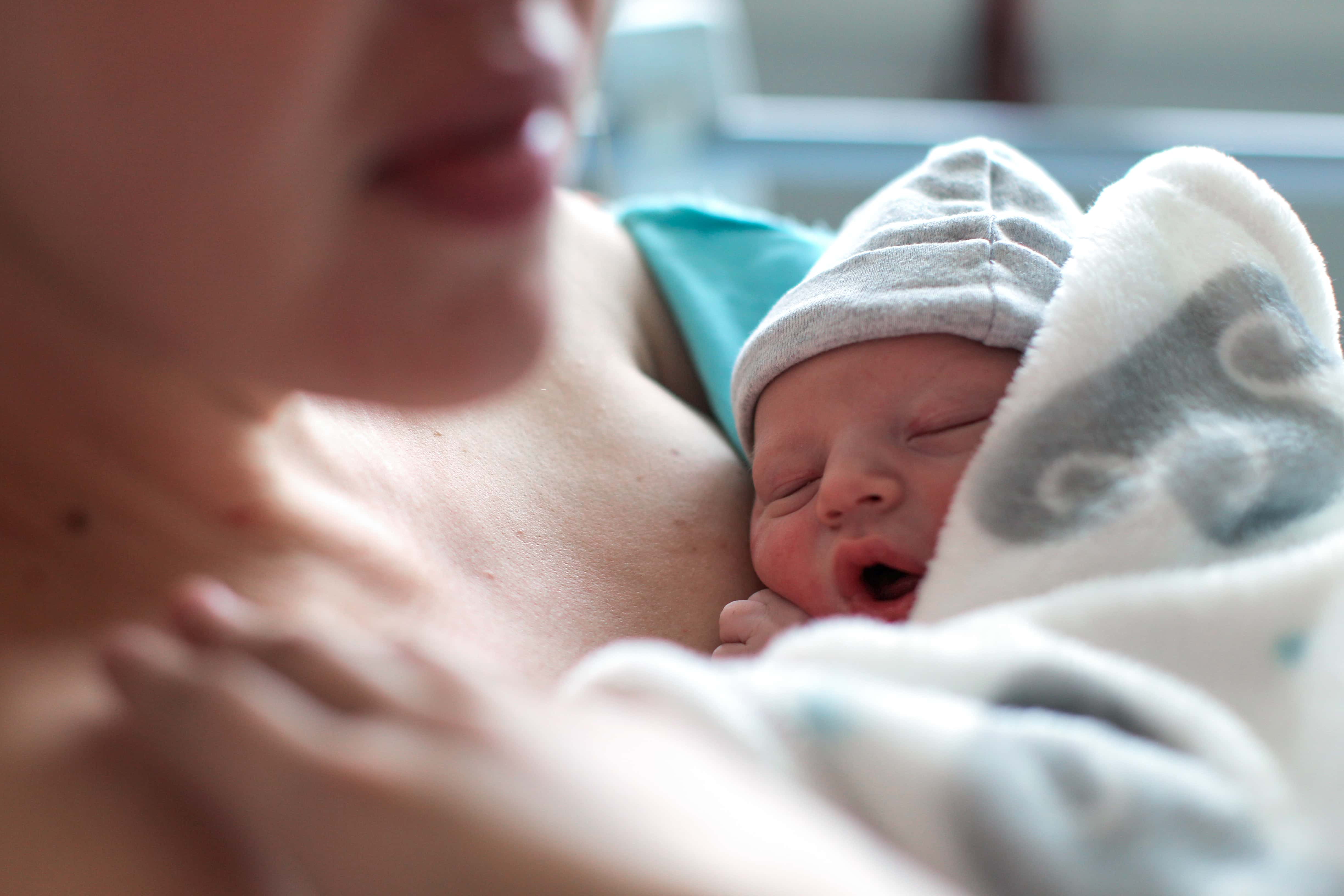Early skin-to-skin contact between mother and baby after cesarean delivery could have potential risks, says study

Recent trends in neonatal care recommend early skin-to-skin contact between mothers and newborns, to improve the delivery experience and the success of breastfeeding, even in the case of cesarean delivery. However, in two separate case studies, experts have now shown the potential dangers during skin-to-skin contact (SSC) for mother and baby following C-section birth.
In both cases, the newborn came into contact with the ECG electrodes placed on the mother's skin, leading to abnormal heart readings. Researchers say the alarm on the monitor could have led to a misdiagnosis and an inadequate or incorrect treatment given to the mother.
The electrodes on the mother's skin monitor her vital signs during the cesarean section surgery.
"The implications are that skin-to-skin contact is an important issue for both the mother and the child and should be implemented every time it is possible, even in the operating room for a cesarean section. However, to maintain both patients safety, it is important to be aware of potential drills of SSC in the operating room, especially electric interferences of the neonate ECG rhythm on his mother's. It is important to recognize them before an accident occurs, due to insufficient training/knowledge of the anaesthesiologist/health professional looking after the patient," co-author Dr Nicolas Brogly from La Zarzuela University Hospital and La Paz Hospital, Madrid, Spain, told MEA WorldWide (MEAWW).
"The main concern for us is to alert doctors how to put the newborn on their mother's chest after a cesarean section, to make sure there is no contact possible between the newborn and the ECG lead of the mother. Because there is such a possibility and if the newborn does make contact, this can result in a monitor alarm. This, in turn, can lead to unnecessary and even dangerous medical interventions," co-author Dr Leonie Slegers from St Antonius Hospital, Woerden, the Netherlands, told MEAWW.
The two case studies have been reported in the European Journal of Anaesthesiology.
First case study
A 37-year-old woman giving birth to her first child, with no history of heart disease, was admitted to the obstetrics ward at La Zarzuela University Hospital, Madrid, Spain, to induce labor.
After eight hours, doctors proceeded to a cesarean section because the baby's head was too large to fit through the mother's pelvis. The mother was given a standard epidural, and her vital signs were monitored. Soon after, a healthy baby boy was delivered with no major bleeding.
After an initial examination of the baby, he was placed on his mother's chest to provide early skin-to-skin contact. Shortly after this, the heart rate alarm was triggered on the monitor due to an apparent dramatic increase in the mother's heart rate. However, the woman remained conscious and with no complaint. The vital signs of the mother also showed as normal, including her radial pulse, which did not show any abnormal signs or high heart rate.
After investigation, the team found that the newborn was suckling the right electrode of the ECG, which was immediately replaced to another site on the mother's skin. "The abnormal ECG rhythm, which was, in fact, a combination of the mother and the baby's ECG, then disappeared," says Dr Brogly.
Second case study
This involved a 36-year-old woman who had been pregnant for 40 weeks and had no history of heart disease. Despite labor proceeding normally, the baby's head did not descend, and doctors proceeded to a cesarean section.
The woman remained stable throughout, and the operation produced a healthy baby boy who was placed on her chest, with warm blankets put on both of them. Soon after, the ECG changed to an abnormally fast rhythm (tachycardia). The patient still had the baby on her chest, and while her other vital signs were normal, the ECG appeared to contain two different ECG rhythms in one recording.
A quick inspection of the baby showed that he had taken the right ECG lead in his hand. After carefully moving this lead to the mother's right shoulder, the ECG returned to normal, says Dr Slegers.
Experts recommend taking necessary precautions
According to the experts, both cases show that through the baby suckling or touching an ECG electrode, the cardiac electric activity of the baby can merge with the mother.
“These two cases illustrate that electrocardiographic interference can be observed during cesarean delivery and SSC is one of the possible causes as a result of the baby suckling or touching an ECG electrode: in these conditions, the cardiac electric activity of the baby can merge with his mother’s,” says the study.
This novel source of electric interference, says the team, represents a risk for both the mother and the baby.
"The alarm on the monitor could have led to a misdiagnosis of supraventricular arrhythmia, which could then have led to the administration of antiarrhythmic drugs, or even worse, using the defibrillator on the mother to stabilize her heart rate," says Dr Brogly.
Both experts, however, recommend that early skin-to-skin contact should continue, as it has proven its benefits for both the mother and the child.

"I consider that it is still recommendable to promote early SSC to improve the efficacy of breastfeeding and to improve labor experience of the mother, to be "baby-friendly" in such a special moment for the women's life," Dr Brogly told MEAWW.
The experts recommend placing the ECG electrodes at the back of the mother, or the back of the shoulders and as low as possible on the left side, to avoid this type of rhythm to be observed, and to enable adequate cardiac monitoring of the mother.
"Informing anaesthesiologists that this type of electric rhythm is sometimes observed and that no treatment is necessary, is important. What needs to be done is to remove the baby from the electrode," Dr. Brogly told MEAWW.